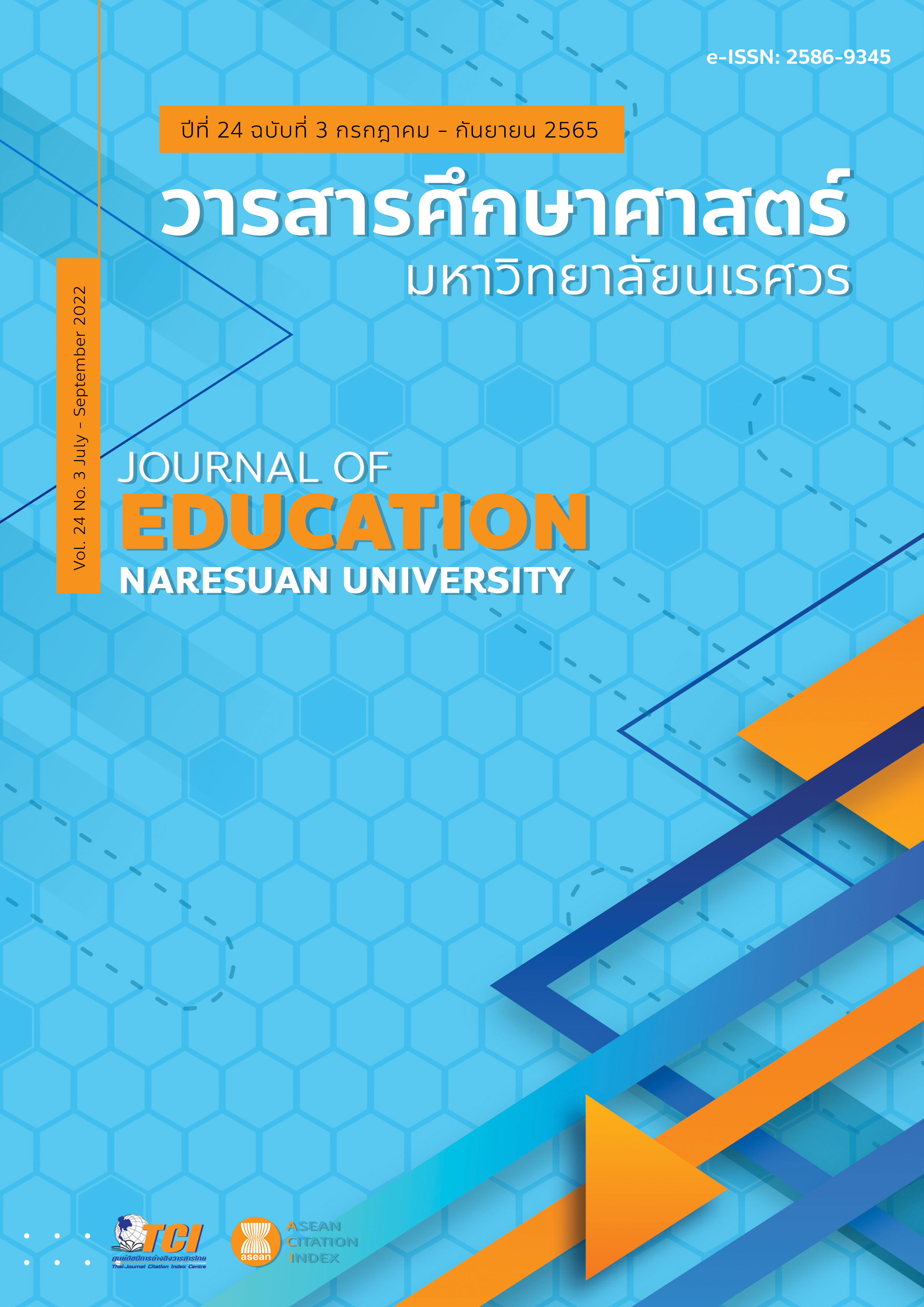DEVELOPMENT OF P-PIADA BASED DISCIPLINARY INTEGRATED TEACHING MODEL ON COMMUNICATION NETWORK ANALYSIS FOR ELECTRICAL ENGINEERING EDUCATION การพัฒนารูปแบบการสอนเชิงบูรณาการศาสตร์ P-PIADA เรื่อง การวิเคราะห์โครงข่ายสื่อสาร สำหรับการศึกษาทางด้านวิศวกรรมไฟฟ้า
Main Article Content
Abstract
The purpose of this research was to develop and assess the efficiency of P-PIADA based disciplinary integrated teaching model on communication network analysis for electrical engineering education. The research procedures had been started from developing P-PIADA model based on STEAM education consisting of 6 steps: Preparation, Pre-learning, Information, Activity, Discussion and Assessment process. The developed instructional package includes the lesson plan, information sheet, worksheet, an achievement test, simulation program, PowerPoint media and visual experimental set. The instructional package is used in the teaching on communication network analysis consisting of the resonant circuit two-port network and filter circuit. Finally, the quality of teaching and learning model evaluated by 10 experts was at a highly appropriate level. The purposive sampling group was 46 bachelor students registered in communication and transmission at the department of Teacher Training in Electrical Engineering, Faculty of Technical Education, King Mongkut’s University of Technology North Bangkok. The research instruments consisted of teacher manual, lesson plan, integrated management of P-PIADA activities, instructional media and test. The statistical analysis is mean standard deviation, t-test and efficiency standard of E1/E2. The research results shown that 1) the research results shown that the efficiency of developed instructional package had efficiency equal to 76.49/77.36 which is in accord to the standard criteria of 75/75, 2) the comparison of learning progress of the learners has a significantly posttest score higher than pretest score at the .05 level, and 3) the students’ satisfaction was at a high level ( = 4.32, S.D. = 0.51).
Article Details

This work is licensed under a Creative Commons Attribution-NonCommercial-NoDerivatives 4.0 International License.
The owner of the article does not copy or violate any of its copyright. If any copyright infringement occurs or prosecution, in any case, the Editorial Board is not involved in all the rights to the owner of the article to be performed.
References
Alongorn, P., & Somsak, A. (2015). Development instructional model in Maxwell Equation, Plan Wave and Power of Wave using SATADE Learning Model. Technical Education Journal King Mongkut’s University of Technology North Bangkok, 6(1), 177–186. [in Thai]
Anuchart, S. (2014). A development of a learning activity package for industrial electrical vocational teacher focused on students’ working skills under inquiry–based learning (5e) (Doctoral dissertation). Bangkok: King Mongkut's University of Technology North Bangkok. [in Thai]
Anurak, M. (2014). Development of P-CSDE Instructional model for telecommunication engineering study, bachelor education (Doctoral dissertation). Bangkok: King Mongkut's University of Technology North Bangkok. [in Thai]
Ekkaphan, P., & Somsak, A., (2019). Instructional management using simulation based RISDA learning model for teaching of industrial electronics. The 11th National Conference on Technical Education
and the 6th International Conference on Technical Education (pp. 44-48). Thailand: KMUTNB Bangkok.
Hyunju, P., Soo-yong, B., Jaeho, S., Hyesook, H., & Yoon Su, B. (2016). Teachers’ perceptions and practices of STEAM education in South Korea. Eurasia Journal of Mathematics, Science & Technology Education, 12(7), 1739-1753.
Kumpirarusk, P., & Rohitratana, K. (2018). Industry 4.0: Future industries of Thailand. WMS Journal of Management, 7(3), 52-64. [in Thai]
Pinit, N., Surapan, T., & Somsak, A. (2013). Development of SMISEA learning model for high frequency transmission line, The 6th National Conference on Technical Education (pp.117-122). Thailand: KMUTNB Bangkok. [in Thai].
Pinyo, W. (2019). Effect of integrated learning activities based on STEAM education on science learning achievement, critical thinking skills and students’ satisfaction of grade 4 students. Journal of Journal of Research Unit on Science, Technology and Environment for Learning, 7(3), 52–64. [in Thai]
Sirawan, J. (2017). Integrated learning management in Thailand 4.0 era, based on STEM, STEAM, and STERAM. Journal of Education and Social Development, 13(1), 19–30. [in Thai]
Tomas, U. (2012). Student competencies in structural engineering: Modelling cultural environment in Qassim University, SEFI 40th annual conference (pp.1-8). Greece: Thessaloniki.
Veronica, A. S., Barbara, N., Cibele V, Falkenberg., Stephanie, P., & Raquel,l M. H., (2018). STEAM: Using the arts to train well-rounded and creative scientists. Journal of Microbiology & Biology Education, 19(1), 1-7.


